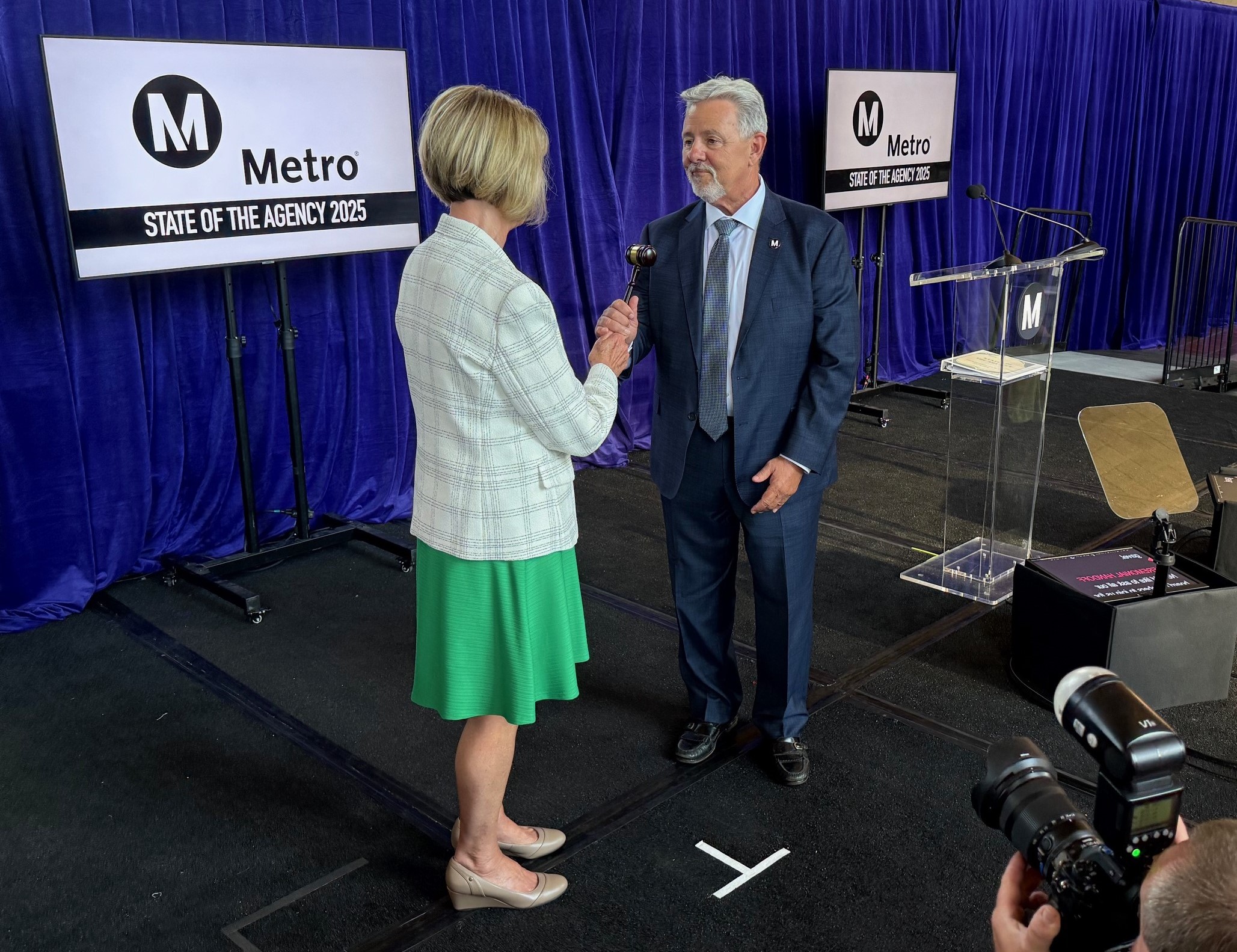
Last week, Streetsblog L.A. ran a national Streetsblog Network story DC and New Orleans Closing the Bike Commute Gap with Portland which summarized this BikePortland story. Those stories examined recently released Census data to shows trends in bicycle commuting.
Since 2008, about 6 percent of Portland commuters traveled primarily by bike. The Census shows that bike commuting in Portland and Minneapolis (two places with reputations as being among the most bike-friendly larger cities in the U.S.) has mostly leveled off, while Washington D.C. and New Orleans are seeing increased percentages.
What about Los Angeles? What does the latest Census data tell us about travel patterns here?
Luckily, friend of the blog and L.A. City Bicycle Advisory Committee chair, Jeff Jacobberger downloaded and crunched the numbers. As Jacobberger clarifies below, these are Census data for work commute trips only. They can be useful for tracking changes over time, but they tend to mush complexities, to under-count low-income communities, and to underestimate overall actual percentages for walking and bicycling (by not including trips to school, the store, the gym, etc.). For example, if I bike a mile, then lock up and take a train for two miles, then disembark and walk a quarter mile to get to work, that would show up only as one train trip.
With those caveats in mind, the city of Los Angeles commuting mode share data is as follows:
- Driving Alone: 67.1 percent
- Carpooling: 9.9 percent
- Riding Transit: 10.8 percent
- Walking: 3.6 percent
- Bicycling: 1.2 percent
- Other: 1.9 percent (includes taxi, motorcycle, other)
- Work at Home: 5.4 percent
From an email communication, Jacobberger goes into greater detail about bicycling:
The US Census Bureau has just released data from the 2013 American Community Survey regarding bicycle commuting in [the city of] Los Angeles for 2013: 1.8% of men usually bike to work, but only 0.6% of women, for an overall 1.2% bike commute rate. The wide disparity in male vs. female bike commuting is a clear sign that L.A.’s streets are not perceived to be safe places to ride.
That is a 33% increase since 2010; and a 100% increase since 2000.
Looking at that 1.8 percent number, Jacobberger mentioned some interesting comparisons to me when we talked at the Mid City West Park(ing) Day park. The number of U.S. men who identify as gay is 1.8 percent. The percentage of Americans who are Jewish is about 1.9 percent. Jacoberger arrives at this estimate by taking the midpoint of estimates of the “core” Jewish population from Wikipedia (6.1 million) divided by the US population per the Census Bureau (318.9 million.) Few media voices would get away with making a bald statement like "all gays are arrogant" or "all Jews are reckless," but, sadly, we still see these sorts of stereotypes applied to all bicyclists, including in last week's media coverage of the new 3-foot passing law.
Jacobberger broke down some of the numbers a little further in a subsequent email, in which he included his source spreadsheet:
It is no surprise that the highest levels of cycling are the area around USC (which is comparable to Santa Monica) and parts of South L.A.
Some interesting things pop out: e.g., West L.A./Westwood has an overall bike mode share equal to Silver Lake, Echo Park, Westlake.
As you know, these numbers come with the big caveat that they measure only work trips (and don’t count kids riding to school, parks, etc.) My sense is that there are a lot of young non-work riders in places like Silver Lake and NELA, and not so many in West L.A.
If you look at the California statewide data, the highest levels of cycling are around major universities (UC Davis, Stanford, Berkeley, Chico). When you look at the numbers near USC, it might be fair to ask whether better bike infrastructure around UCLA (and USC) might get bike commute shares closer to the levels seen at Cal.
Thank you to Jeff Jacobberger for doing all the real work on this story! Streetsblog will look to dive deeper into the data and perhaps graph and explore trends over time.






